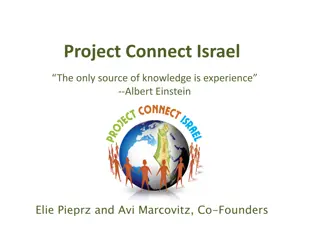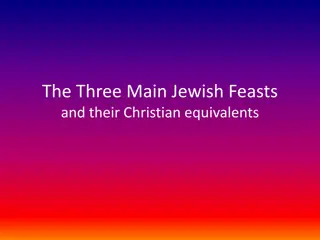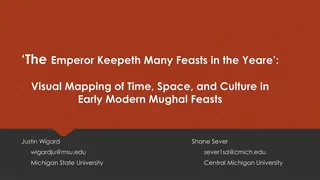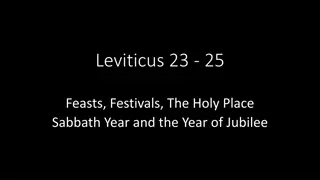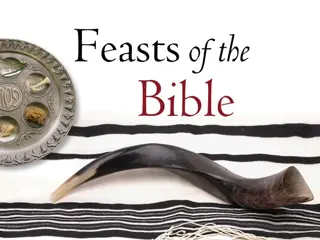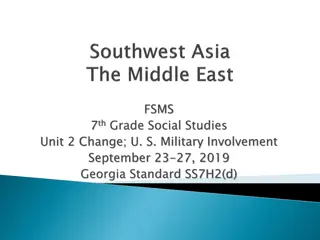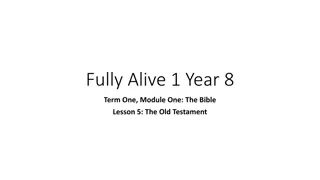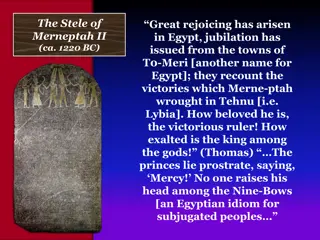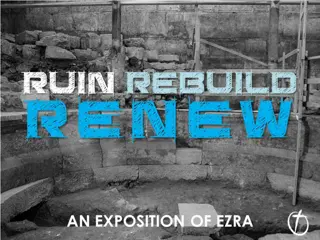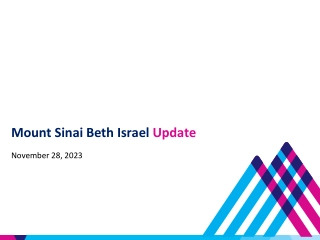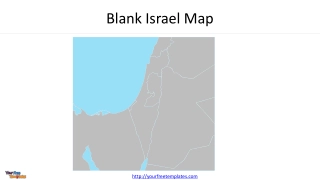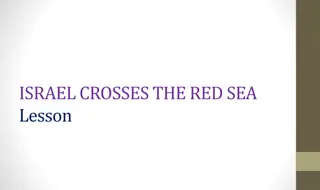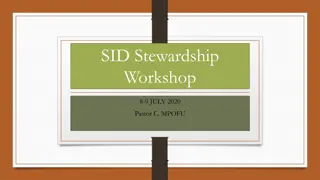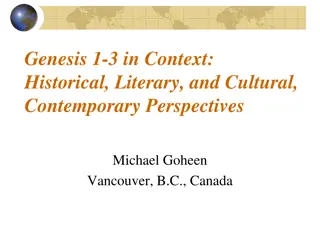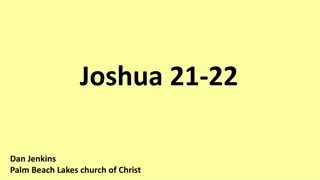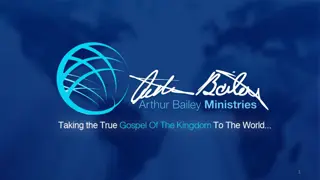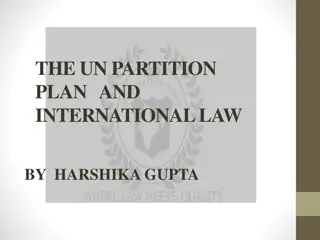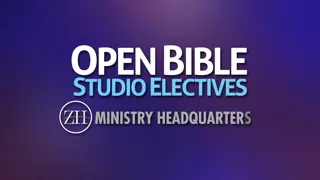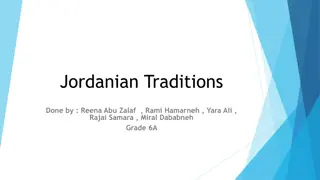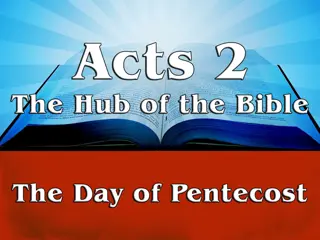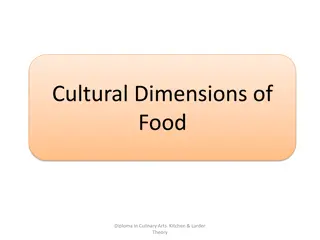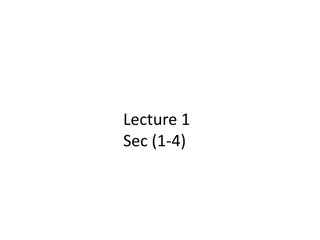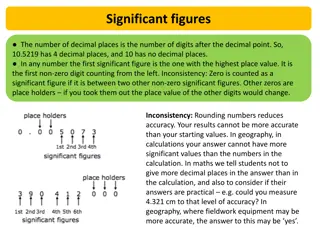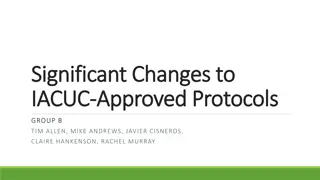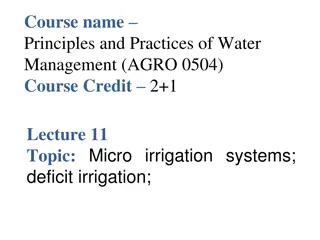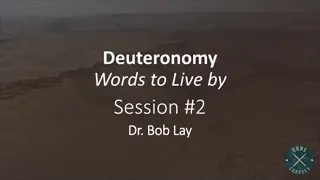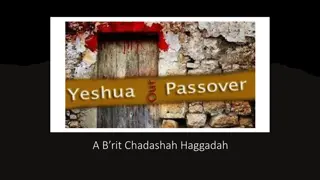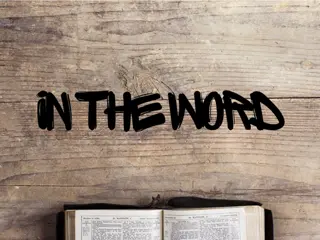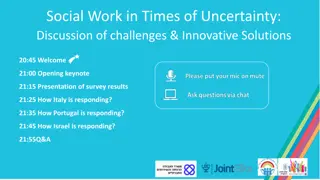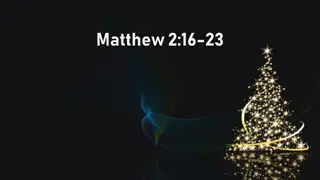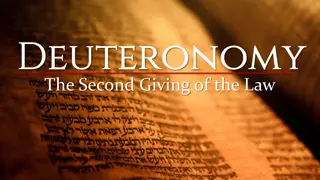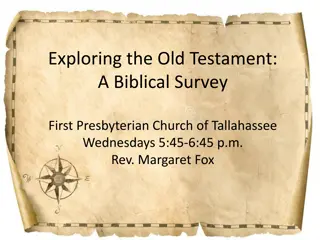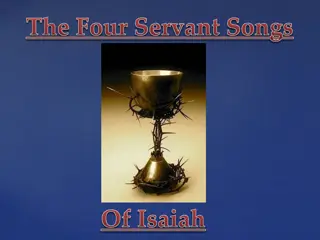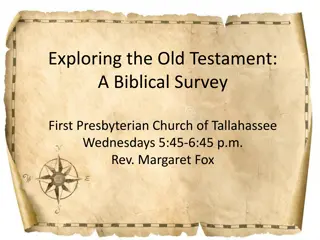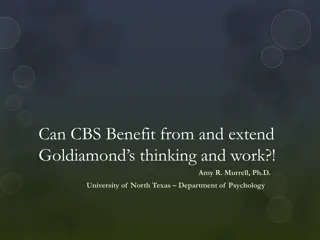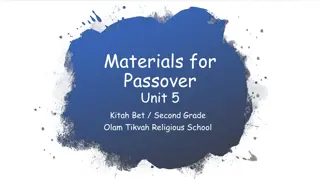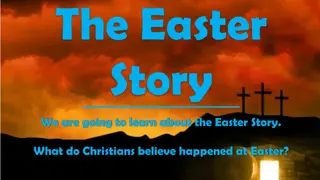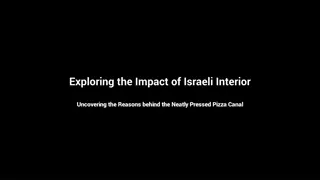The Significant Feasts of Israel
The Feasts of Israel are mandatory observances that hold great spiritual significance for the Jewish people. These feasts include the Sabbath, Feast of Trumpets, Passover and Unleavened Bread, Pentecost, Day of Atonement, Booths, and more. Each feast is celebrated at a specific time of the year and has deep historical and symbolic meanings rooted in Jewish tradition and religious practices.
Download Presentation

Please find below an Image/Link to download the presentation.
The content on the website is provided AS IS for your information and personal use only. It may not be sold, licensed, or shared on other websites without obtaining consent from the author. Download presentation by click this link. If you encounter any issues during the download, it is possible that the publisher has removed the file from their server.
E N D
Presentation Transcript
The Feasts Sabbath (Leviticus 23:1-3; 23-25) Sabbath Day (Exodus 20:8-11; 31:12-17; Deuteronomy 5:13-15) Feast of Trumpets / Seventh New Moon (Leviticus 23:23-25; Numbers 10:10; 28:11-15; 29:1-6) Sabbath Year (Exodus 23:10-11; Leviticus 25:2-7, 20-22) Year of Jubilee (Leviticus 25:8-16; 27:16-25) Passover and Unleavened Bread (Leviticus 23:4-8) Pentecost / Weeks and First Fruits (Leviticus 23:9-22) Day of Atonement (Leviticus 23:26-32) Booths / Tabernacles (Leviticus 23:33-44) Purim (Esther 9:16-32) Dedication (John 10:22-23)
Time of Year for the Feasts Abib/Nisan (March April) Ziv/Iyyar(April May) Sivan (May June) Tammuz (June July) Ab (July August) Elul (August September) Ethanim/Tishri (September October) Passover and Unleavened Bread Nisan 14-21 Pentecost / Weeks and First Fruits Sivan 6 Feast of Trumpets / Seventh New Moon Tishri 1 Day of Atonement Tishri 10 Booths / Tabernacles Tishri 15-21 Bul/Heshvan (October November) Chislev (November December) Tebeth (December January) Shebat (January February) Adar (February March) Adar Sheni a leap month that was added if the barley was not ripe on the 16thof Nisan Dedication Chislev 25-30 and Tebeth 1-2 Purim Adar 14/15
Feast of Passover The Passover Feast and the Feast of Unleavened Bread The Passover feast and the feast of Unleavened Bread are celebrated together This feast signified the start of the year The sacrifice was an unblemished, one year old, male lamb which was observed for 4 days The lamb was killed on the 14thof Nisan/Abib The Feast of Unleavened Bread began on the 15thof Nisan/Abib The lamb was to be eaten in haste and with unleavened bread There were to be no leftovers It was a picture of the redemption of the Israelites from Egypt On the first day, leaven was removed from the homes Unleavened bread was eaten for seven days The first and seventh days were Sabbaths Those who were ceremonially unclean or on a distant journey could observe the Passover a month later Those who did not celebrate the Passover were cut off All seven days, burnt and grain offerings, and a sin offering were sacrificed The Passover had to be sacrificed in the presence of the Lord Typology Jesus Christ was observed and found to be unblemished Jesus Christ is our Passover sacrifice Jesus presented His sacrifice in the presence of the Lord
Feast of Weeks Pentecost / Weeks and First Fruits The Feasts of Weeks (Pentecost) and First Fruits are related The offering was presented as a wave offering The first fruits were offered the day after the Sabbath of Passover and also a burnt offering of a one year old, unblemished lamb No harvesting was to be done prior to the Feast of Weeks and First Fruits The Feast of Weeks was celebrated a day after the seven Sabbaths (weeks), thus it occurred 50 days (hence the NT name Pentecost) after the First Fruits Offerings would be offered at the Feast of Weeks A Sabbath was observed on the Feast of Weeks The edges of the fields were to be left for the poor and the sojourner The freewill offerings were according to how the Lord blessed you The feast was a time of rejoicing for all people The feast was a time to remember being a slave in Egypt Typology Jesus is the first fruits from the dead The Holy Spirit is the guarantee of our salvation and He was given on Pentecost We are the harvest that Jesus Christ s death inaugurated and the Holy Spirit guarantees The Church started on the day of Pentecost
Feast of Booths Booths / Tabernacles The feast begins on the 15thof Tishri and lasts 7 days The Day of Atonement occurred on of 10thday of Tishri and the Feast of Trumpets occurred on the 1stof Tishri The first and eighth days of the feast are Sabbaths An offering by fire was required for every day of the feast The feast coincided with gathering in the crops It was a feast of rejoicing The people were to live in booths made of foliage, branches, and boughs It was a testimony to future generations It was a testimony of the Lord s deliverance out of Egypt The reason for the feast was the blessing of the Lord The law was read during the feast The feast was a time to learn the fear of the Lord The feast will be celebrated during the Millennium (cf. Peter in Luke 9:27-36) Typology Jesus Christ delivered us out of the domain of darkness Jesus Christ gives us rest Jesus Christ takes care of us We have been blessed through Jesus Christ Our citizenship is in heaven


